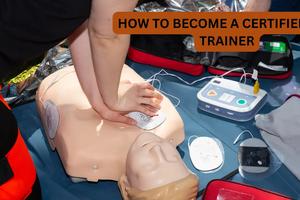How to Choose the Best Yoga Teacher Training Programme for You - Training Program for Your Goals, Learning Style

Key Takeaways
Essential insights to remember
Choose yoga teacher training programs with comprehensive curriculums covering asanas, philosophy, anatomy, and teaching methodology for a well-rounded certification experience.
Compare certification standards between Yoga Alliance (US), British Wheel of Yoga (UK), and European Union of Yoga when selecting international yoga teacher training options.
Balance investment considerations for yoga teacher training costs ($2,000-$5,000) against program quality, format, and included resources.
Evaluate the training timeline that works best for your learning style—from part-time weekend formats to full immersion yoga teacher training intensives.
Research the lead trainers' qualifications and experience before committing to any 200-hour or 500-hour yoga certification program.
When you decide to pursue yoga teacher training, one of the biggest decisions is choosing the right programme. With so many options ranging from a weekend workshop to an intensive 1-month immersion, it can be overwhelming trying to determine which training is best suited for your goals as an aspiring yoga instructor.
This guide will walk you through the key factors to evaluate when selecting a quality yoga teacher training that sets you up for success.
Look at the All-Encompassing Curriculum
An indicator of a thorough training course is a well-rounded curriculum that comprehensively covers everything you need to know as a yoga instructor. Look for programmes offering yoga teacher training in Surrey that include in-depth training on asanas, anatomy, assisting and correcting, teaching methodology, sequencing, philosophy and history, breathing techniques, and meditation.
A strong curriculum will also have a practical component on building your yoga business. The best trainings strike a balance between theory and practical experience.
Evaluate the Lead Trainer’s Qualifications
The teacher of your yoga teacher training matters just as much as the curriculum itself. Seek out programmes led by experienced instructors who walk the talk. Look for lead trainers with extensive experience teaching yoga and training teachers.
It's a good sign if they’re still active yoga instructors themselves. Double check that the lead trainer is registered with Yoga Alliance at the E-RYT 500 level, indicating they’ve completed significant training hours beyond the base requirements.
Consider the Reputation of the Training School
In addition to vetting the main trainer, you also want to ensure you choose a yoga teacher training with a reputable school behind it. Look at testimonials from past trainees. Schools with strong community ties, longevity in the local area, and successful yoga teacher graduates are positive indicators.
Practice Teaching Opportunities Are Crucial
An indicator of an immersive, worthwhile training is one with hands-on practice teaching built into the schedule. You should have opportunities to plan and lead sequences for your fellow trainees under the guidance of experienced teachers.
Practice teaching allows you to build confidence, get valuable feedback, and ask questions in a safe environment before teaching public classes. Look for training curriculums providing practical experience through assisting established teachers and observation hours.
Evaluate Location and Immersive Options
Yoga teacher trainings take place worldwide, from Spain to Edinburgh. Consider whether an international destination training or something local makes more sense for your first experience. Also, decide if you want to focus fully on the training or prefer a part-time schedule.
Multi-month modular formats allow you to keep working while pursuing the training over evenings and weekends. Immersive “yoga bootcamp” options range from several weeks abroad to a month-long intensive retreat. Determine what schedule structure and location suits your lifestyle.
Consider Certification and Accreditation Standards
When evaluating yoga teacher training programs, pay close attention to certification standards and accreditation bodies. In the United States, courses accredited by the Yoga Alliance at the 200-hour (RYT-200) or 500-hour (RYT-500) levels are widely recognized.
In the United Kingdom, look for programs certified by the British Wheel of Yoga, which offers Level 4 qualifications equivalent to the first year of a university degree. European students might consider programs that meet European Union of Yoga (EUY) standards, which require a minimum of 500 hours of instruction over four years.
Regardless of location, proper accreditation ensures your certification will be respected in the yoga community and provides assurance of curriculum quality.
Evaluate the Training Timeline and Format
Yoga teacher training programs vary significantly in format and duration. Traditional programs spread 200 hours over several months with weekend intensives, while immersive bootcamp-style programs compress the same content into 3-4 weeks.
Consider your learning style and personal circumstances when choosing. Longer formats allow time for integration and practice between sessions, while intensive programs offer total immersion without life's distractions.
Virtual and hybrid options have also become increasingly available, offering flexibility for those with work or family commitments. Some programs, like the one from Down Under Yoga, offer both in-person and livestream options to accommodate different needs.
Understand the Investment Required
Quality yoga teacher training represents a significant investment, typically ranging from $2,000 to $5,000 for a comprehensive 200-hour program. When comparing costs, look beyond the sticker price to understand what's included—training manuals, props, additional workshops, and post-graduation support can add value.
Many schools offer early registration discounts (such as the $200-$400 savings mentioned in the Down Under Yoga program) or payment plans to make training more accessible. Consider this expense an investment in your future, whether you plan to teach professionally or simply deepen your personal practice and understanding of yoga.
Explore Specialty and Advanced Training Options
Beyond foundational 200-hour certifications, consider what specialized training might align with your teaching aspirations. Many schools offer focused workshops in areas like prenatal yoga, yoga for seniors, trauma-sensitive approaches, or therapeutic applications.
The most comprehensive programs introduce you to various yoga styles (Vinyasa, Ashtanga, Restorative, etc.) and teaching methodologies, providing a well-rounded foundation. If you have a specific population you hope to serve or a particular yoga style you're passionate about, look for programs that provide that specialized knowledge or consider planning for additional training after your initial certification.
With an array of formats, locations, styles, and trainers to evaluate, choosing a yoga teacher training is a very personal decision. Identifying the factors most important for your goals and learning style will guide you towards the best fit. Vetting the trainers, teaching experience, curriculum, and school reputation takes time but ensures you choose high quality training setting you up for fulfilment as a yoga instructor. Approach this investment in yourself and your new career or passion with care.





